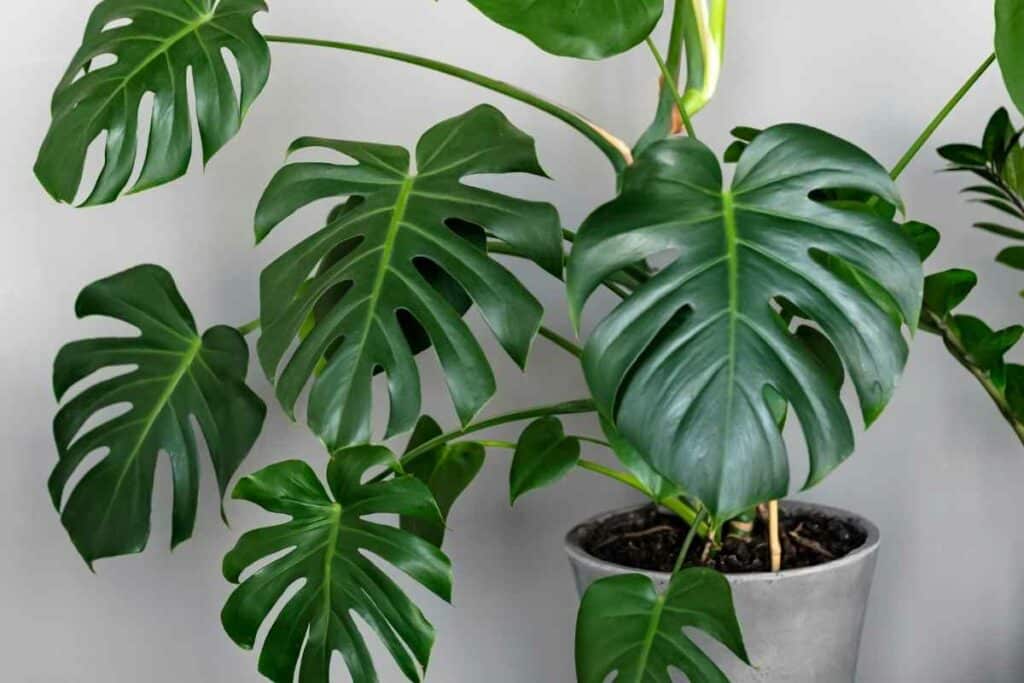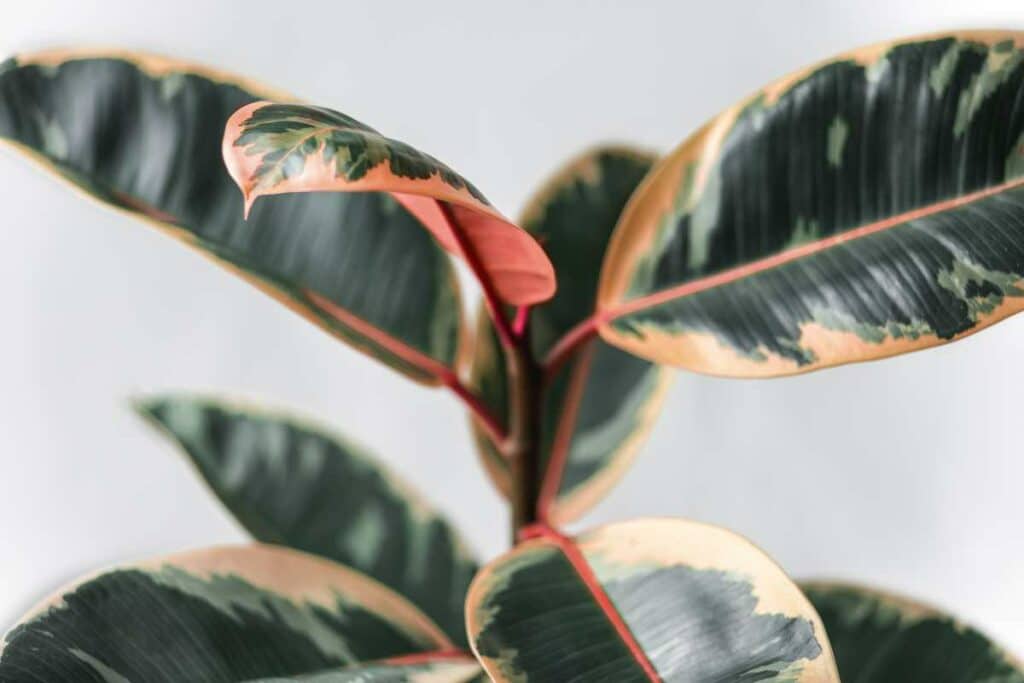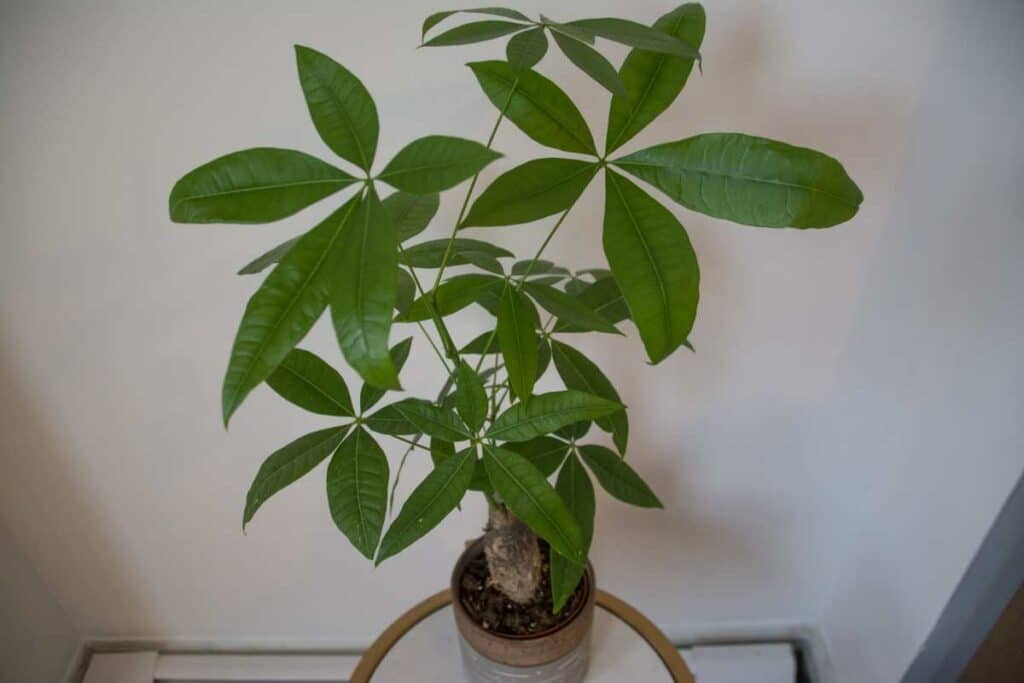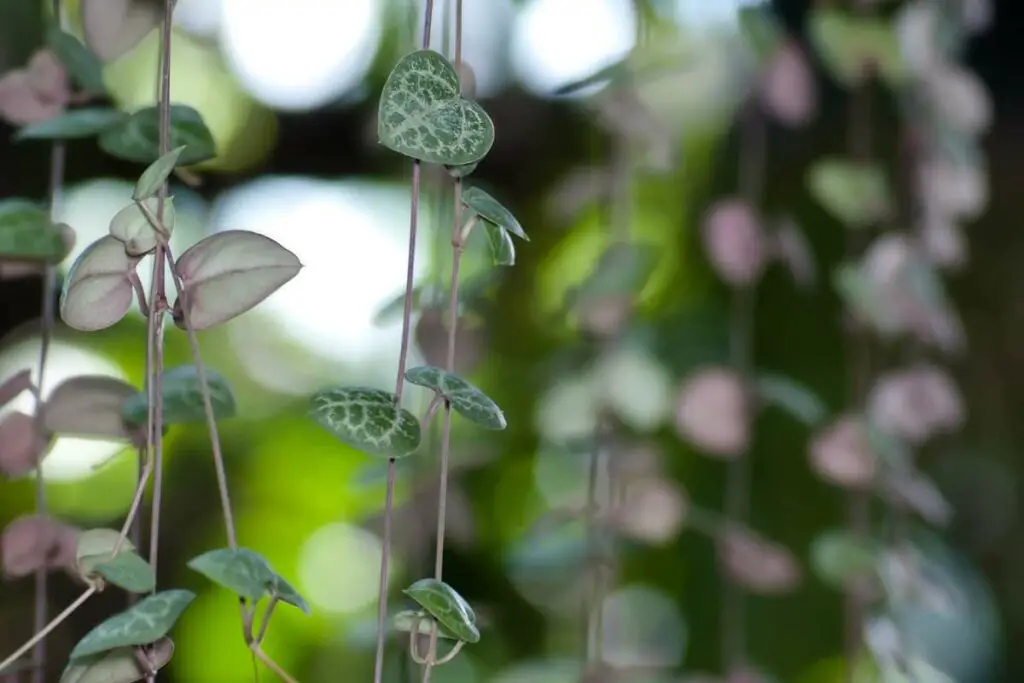Have you ever wondered about how a cheese plant and its roots work?
The cheese plant aerial roots are an important part of how the plant grows, but what are they for and what do you need to know about them?
If you have ever seen crazy roots shooting off from the sides of your plant, those are cheese plant aerial roots.
The cheese plant has aerial roots to help itself grow properly. It is a climbing plant, and scrambles up tree trunks to reach the light in the dense rainforests where it lives. The roots are looking for something to latch onto so that the plant can keep growing upward toward the light. They provide stability, and you need to offer at least some of them support.
What Do Aerial Roots Look Like?
These roots start off as little white nubs that break through the stem of the cheese plant, and branch outward.

A root will gradually darken and lengthen, growing fatter. It will stay flexible, but can get quite long.
Some aerial roots may develop a bark-like cover on them, but others will not.
It doesn’t matter if the roots do gain bark or not.
What Are The Aerial Roots for?
The cheese plant aerial roots are intended to help the plant stay stable as it climbs.
Because its stems are thin and its leaves are big, it needs to support itself by latching onto a stable structure – such as a tree trunk – with these roots.
It takes a lot of energy for a plant to support its own weight, and even more so for one with leaves as large as a cheese plant’s leaves.
The plant instead conserved energy by leaning most of its weight on another plant, such as a tree.
Think of this like leaning against another person when you don’t want to stand or sit up straight.
You might observe that the aerial roots grow all over the place, spreading in the oddest of directions as they reach out for support.
Don’t remove them, because the plant needs them and will simply grow more if you do.
You might also expose it to infection if you damage these roots and leave open wounds.
Some people do remove them, and it will not harm the plant as long as it is strong and you use sterilized tools to do so.
In Fact: There is no real reason to do this unless you particularly dislike how the aerial roots look, so many people just leave them intact.
Should I Do Anything with the Aerial Roots?
When the plant is young, it is a good idea to provide it with something to climb up, something for these roots to latch onto.
You can buy moss sticks that will supply the support it is looking for, and help it to stay upright.

Without support, you may find that your cheese plant ends up sprawled across the floor in a mess, with only its aerial roots pointing upward as they try to reach something to pull the plant up on.
The stems aren’t strong enough to support the weight of the leaves in an upright position.
If this happens, you will need to gently disentangle the plant and sort it out.
Drive a strong stick into the pot and use it to prop up the leaves.
Be Creative: You may have to tie them loosely in place while the aerial roots find the stick and establish themselves; this will stop the plant from simply slumping over again.
Do Aerial Roots Soak Up Water and Nutrients?
We all know that plants depend on their roots for water and nutrients, but what about roots way up in the air?
Well, it seems that they may soak in a little water as it runs down the tree trunks and flows over the roots, but on the whole, these roots aren’t responsible for feeding or watering the rest of the plant.
Aerial roots are really only there to provide support, and nothing else. Their job is to anchor the tree, not to feed it.
The other roots that a cheese plant has are known as subterranean roots, and these are responsible for anchoring the plant in the ground, and providing it with water and nutrients from the soil.
Don’t try and feed or water your plant via its aerial roots. It will not work properly, and the plant might dry up and die.
However, if you plant aerial roots in soil, they can start to develop into subterranean roots, and will feed the plant.
Do Aerial Roots Play a Role In Propagation?
If you’re propagating your cheese plant, you might be wondering whether the roots play any role, or whether it matters if you cut one.

On the whole, the aerial roots aren’t useful in most propagation methods, but if you are air layering, you may need to use one.
Air layering is one of the simplest propagation methods because it involves encouraging the plant to grow more roots on its main stem, rather than separating a part and then requiring it to grow roots:
- You can wrap some damp sphagnum moss around the stem of the plant, at the join between a leaf and an aerial root.
- Gently secure the moss with string, and keep it damp for a few weeks.
- The moss should encourage the stem to put out new subterranean roots, and when these are strong enough, you can remove the stem from the plant and you have a whole new cheese plant!
If you only have an aerial root from a cheese plant, you will probably not be able to propagate it.
The aerial root won’t have enough energy to grow new subterranean roots or a stem, and these are needed for the creation of a new cheese plant.
Conclusion
Cheese plant aerial roots are an interesting part of the plant, and they serve an important job in the wild.
Even in a domestic setting, the roots may be integral to holding the plant upright and keeping it stable.
Also Helpful
- Philodendron Moonlight Vs. Golden Goddess
- How to Revive Your Rubber Plant: 6 Tips to Help Your Rubber Tree Thrive Again
- Your Money Tree Lost All Its Leaves – Will It Sprout Again?
- Why Is My Money Tree Dying? 5 Possible Reasons and Solutions
- Do Jade Plants Bloom – Fact or Fiction?
- Plants with Heart Shaped Leaves (Secret Language of Leaves)








